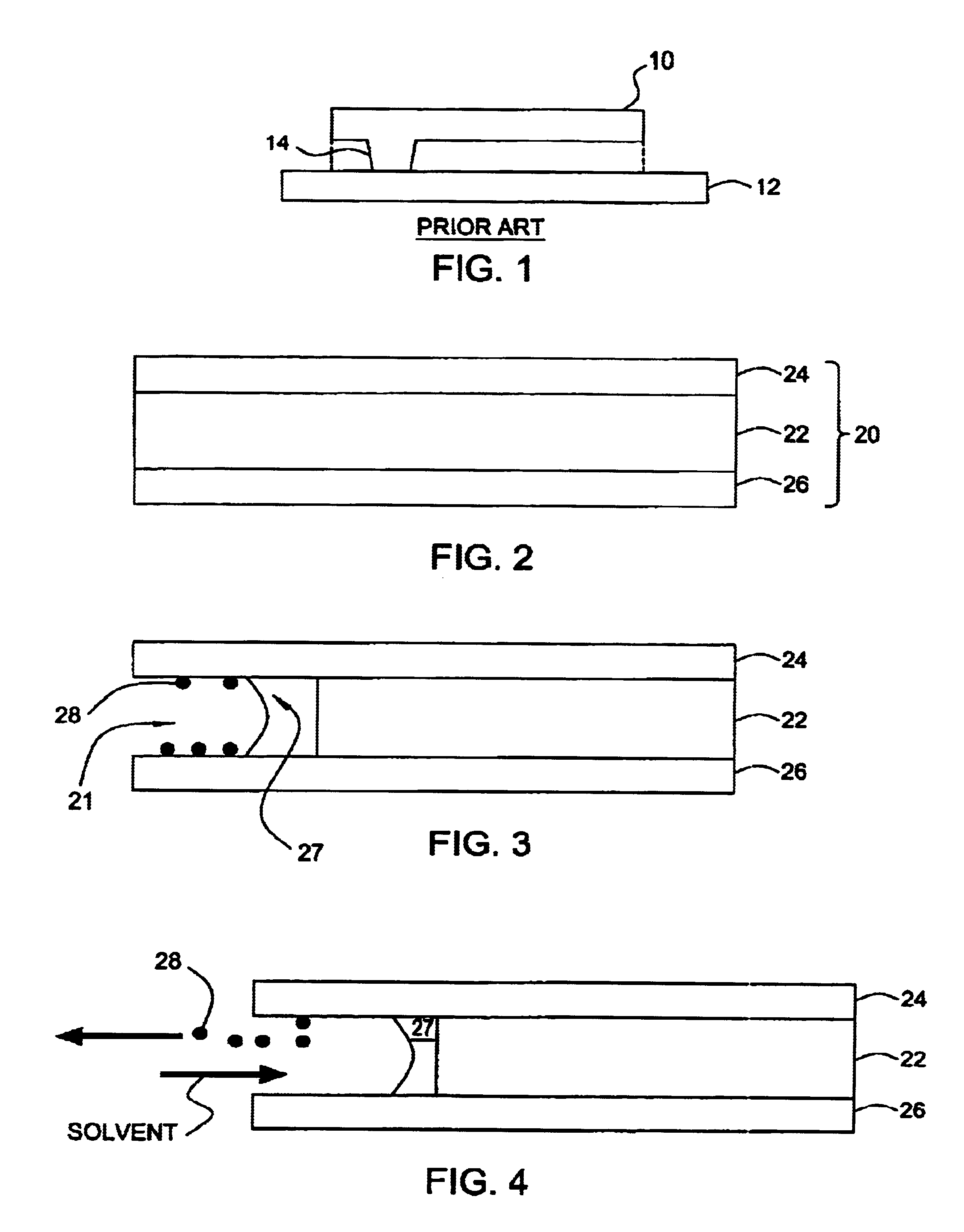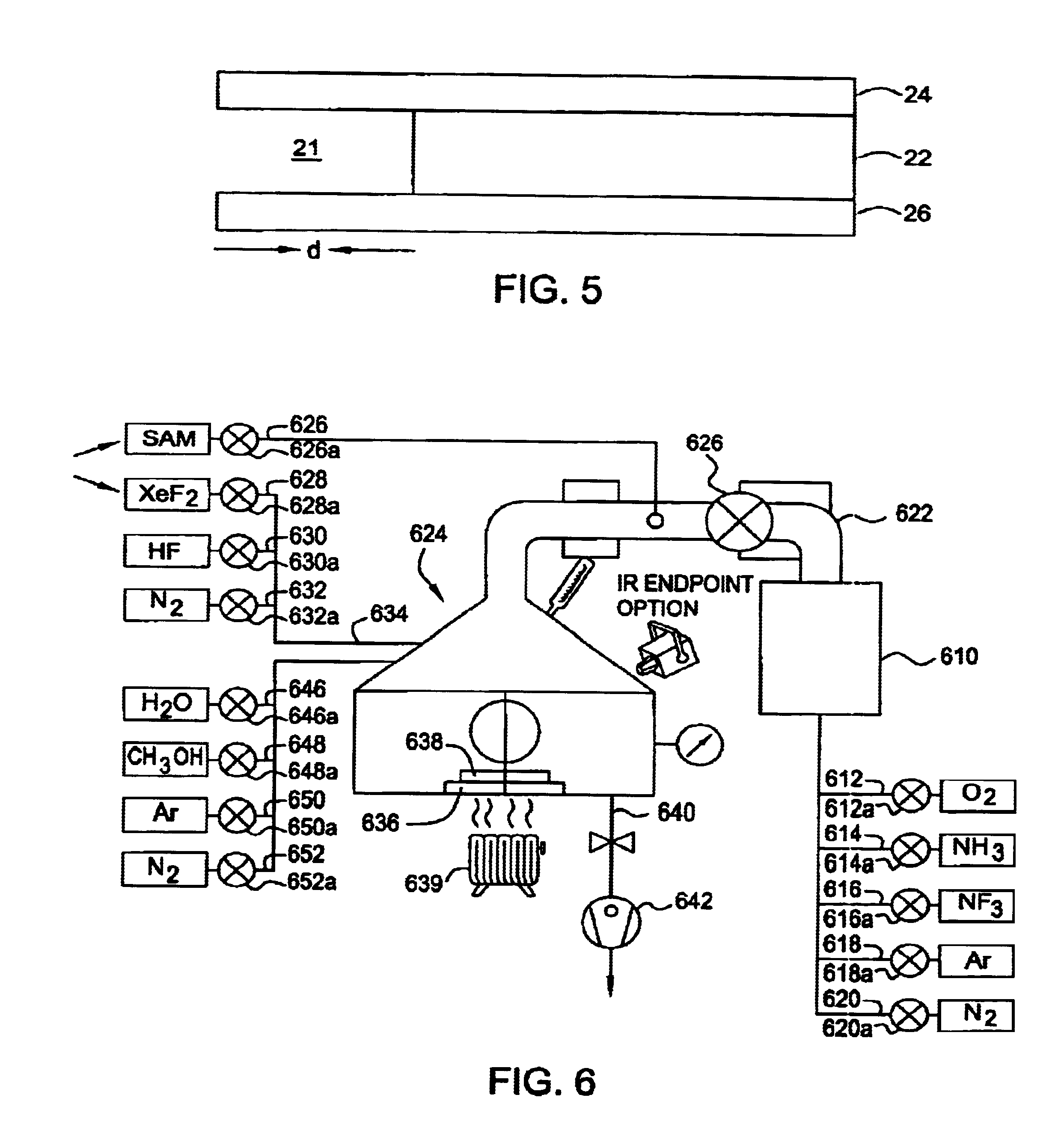Etch process for etching microstructures
a microstructure and etching technology, applied in the direction of instruments, optical elements, optical waveguide light guides, etc., can solve the problems of affecting the release of the final structure, requiring special equipment to handle, and collapsing of parts
- Summary
- Abstract
- Description
- Claims
- Application Information
AI Technical Summary
Benefits of technology
Problems solved by technology
Method used
Image
Examples
example
[0052]A layer of silicon dioxide deposited over a silicon layer and in turn having a polysilicon layer to be released deposited thereon, was etched using a mixture of 1.0 standard liters per minute (slm) of 5% by weight aqueous HF at a pressure of 100 millitorr and a temperature of about 40° C. to form a small opening in the silicon oxide layer. About 33 ml of liquid methanol were then added to the opening to dissolve any residue and rinse the opening.
[0053]The resultant opening was free of residues and methanol had replaced much of the water generated during etching.
[0054]These etch and rinse steps were repeated to form the desired device.
PUM
| Property | Measurement | Unit |
|---|---|---|
| thickness | aaaaa | aaaaa |
| thickness | aaaaa | aaaaa |
| thickness | aaaaa | aaaaa |
Abstract
Description
Claims
Application Information
 Login to View More
Login to View More - R&D
- Intellectual Property
- Life Sciences
- Materials
- Tech Scout
- Unparalleled Data Quality
- Higher Quality Content
- 60% Fewer Hallucinations
Browse by: Latest US Patents, China's latest patents, Technical Efficacy Thesaurus, Application Domain, Technology Topic, Popular Technical Reports.
© 2025 PatSnap. All rights reserved.Legal|Privacy policy|Modern Slavery Act Transparency Statement|Sitemap|About US| Contact US: help@patsnap.com



